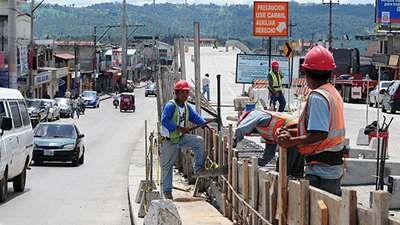As cities grow, the effect of urban sprawl on pollution, poverty, and shared prosperity is an increasing concern, underscoring the need for long-term planning to ensure urban areas are low-carbon and livable, inclusive, competitive, and resilient in the face of climate change, disasters, and other shocks.
How to finance these vast needs in a rapidly urbanizing world will be discussed this week at the World Urban Forum in Medellin, Colombia. If managed well, urbanization has tremendous potential to accelerate poverty reduction and advance many development goals.
Financing that growth is a challenge. Over $1 trillion a year is necessary to bridge the infrastructure gap between what is needed and what is being built in developing countries, and that figure is higher for low-carbon infrastructure. Official development assistance (ODA) stands at about $135 billion today, and financing options through municipal governments’ revenues, debt, or national government transfers are not enough to fill the gap.
“We need to join forces to support cities and their leaders to take a sustainable development path,” said Zoubida Allaoua, acting vice president for sustainable development, who will be speaking at the conference. “That’s why we have developed a framework to inform policy makers on key decisions affecting their land use planning for infrastructure investment to connect cities and people to jobs, markets and homes. We’re also developing new approaches and innovative financial schemes to ensure private and public capital flows to cities in developing countries.”
What needs to be done?
The Bank is working with cities and partners to broaden and deepen sources of financing for sustainable infrastructure.


